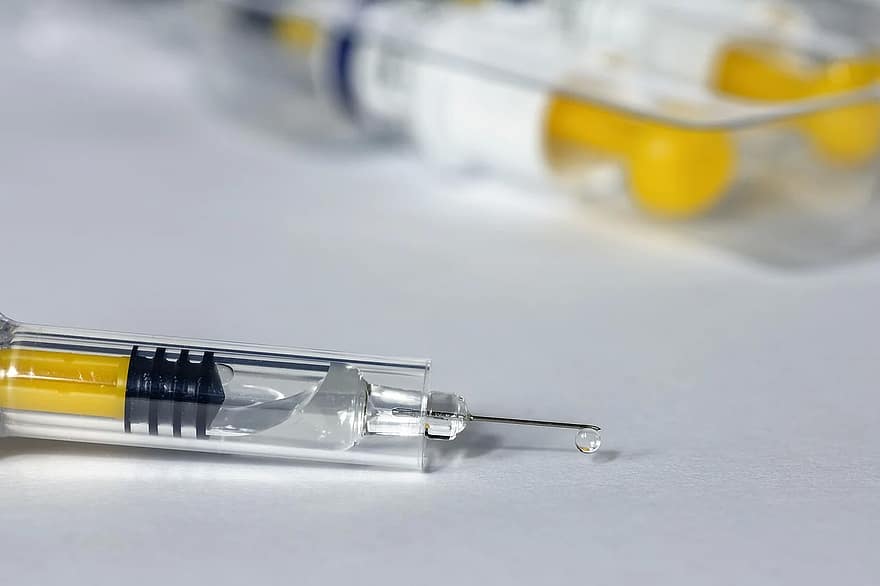The catastrophic global health and socioeconomic impact of COVID-19, together with the absence of any clearly effective preventive or therapeutic remedies, has created a massive unmet medical need. Rapid responses by governments, academia and industry have already resulted in the production of more than 180 vaccine candidates1, 42 of which are being tested in humans at the time of writing. The considerable design flexibility of newer types of vaccine technology gave these candidates a head start in the race. Some of the candidates, which are based on nucleic acids (such as messenger RNA), entered human trials2 as early as March. In this issue, Mulligan et al.3 and Sahin et al.4 report clinical-trial results for a COVID-19 vaccine called BNT162b1, which contains mRNA that encodes part of a protein found on the surface of the SARS-CoV-2 coronavirus. This vaccine, made by Pfizer and BioNTech, was tested in adults in a combined phase I and phase II clinical trial.
The primary goal of phase I/II vaccine clinical trials is to evaluate short-term safety, check dosage and assess aspects of the body’s reaction to the vaccine — effects known as reactogenicity. Reactogenicity could include localized pain, redness or swelling at the site of vaccine injection, as well as systemic symptoms elsewhere in the body, such as fever, muscle pain and headache. Some reactogenicity might be expected as a normal sign that the immune system is generating a response to the vaccine, and so early-phase safety evaluation focuses particularly on more-serious effects.
The secondary goal of these early-stage clinical trials is to assess immunogenicity — the ability of a vaccine to stimulate a detectable immune response to the vaccine target (Fig. 1). This typically involves assessing components of what is known as the adaptive branch of the immune system. The features of interest are vaccine-specific antibody responses and immune cells called CD4 (or helper) T cells and CD8 (cytotoxic) T cells. These T cells can directly target cells infected with the virus, or collaborate with antibody-producing B cells. The best vaccines elicit long-lasting responses that produce ‘neutralizing’ antibodies, which act to hinder or prevent an infectious agent from causing illness5. Once phase I and II trials have been completed, a phase III study can be conducted to determine whether the vaccine affects how susceptible people are to a disease.
Mulligan, Sahin and their respective colleagues provide the first insights into the reactogenicity and immunogenicity of BNT162b1. This vaccine consists of an injected mRNA that encodes part of the ‘spike’ protein of SARS-CoV-2 — a region of the protein known as the receptor-binding domain (RBD), which enables the virus to engage with and infect human cells. Antibodies that bind to the RBD provide a way of interfering with a key starting point in the SARS-CoV-2 cycle of infection, and so attack this viral Achilles heel. Accordingly, the RBD and the spike protein are the targets of most of the vaccine candidates.
Mulligan and colleagues gave the vaccine at one of 3 doses (10, 30 and 100 micrograms) to 36 healthy adults (age range 18–55 years), with 9 other participants receiving a placebo treatment. Sahin and colleagues’ trial did not have a placebo control group, and enrolled 60 participants who received the vaccine at one of 5 doses (1, 10, 30, 50 and 60 µg). The participants in both trials in all but the highest dosage groups (100 and 60 µg, respectively) received 2 vaccinations at 3-week intervals, in what is known as a prime–boost regimen. This approach can determine whether the addition of a second ‘booster’ vaccination enables a strong immune response to develop. More than 80% of the study participants were white, and around 2% were Black.
Although no serious adverse events were reported, notable reactions at the injection site or elsewhere in the body were frequent. For example, of the participants in the medium-dose (30 µg) group of both studies, 96% reported pain at the injection site and 92% reported headaches. Moreover, the prevalence of these reactions was dose dependent, and increased after the booster immunization, so a second injection was not given to the highest-dose groups. In addition, lymphocytes — white blood cells of the immune system (which include T cells and B cells) — were reduced in number in most vaccinated individuals, but returned to normal 6–8 days after vaccination.
Vaccine-induced anti-RBD antibody levels were quantified at multiple time points. However, the latest time point assessed was at only two (Mulligan et al.) or three (Sahin et al.) weeks after the booster injection. All vaccinees developed low-level anti-RBD antibody responses after the first vaccination. As expected, the antibody levels depended on the vaccine dose, and they increased 10–15-fold after the booster. By three weeks after the booster, the antibody levels dropped. Antibody-mediated SARS-CoV-2 neutralization, as assessed by in vitro experiments, followed a similar pattern, and it also declined three weeks after the booster. This result stresses the importance of long-term follow-up to understand the durability of vaccine-induced immune responses. A decline in the response is expected over time, and such a follow-up is needed to determine the rapidity of this decline.
With the exception of the group who received the lowest vaccine dose, levels of neutralizing-antibodies against SARS-CoV-2 compared favourably with those in blood samples taken from people who had recovered from COVID-19 — commonly referred to as COVID-19 convalescent serum or plasma. Crucially, the magnitude and dynamics of the elicited antibody response indicate that a booster dose is essential for this vaccine….







